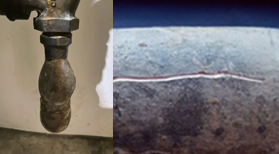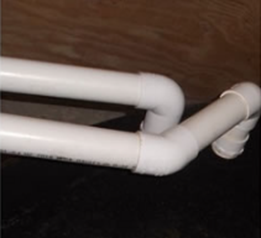On December 16, 2021, the Environmental Protection Agency (EPA), announced a revision to the already “Lead and Copper Rule”. This revision was implemented to empower and better protect communities from exposure to lead in drinking water. Click Here learn more about the Lead and Copper Rule Revision.
Some of the improvements under the revision include better testing protocols to find more sources of lead in drinking water. Establishing new guidelines for testing, and for the first time, requiring testing in schools and childcare facilities. Additionally, requiring all water systems to identify and make public the locations of lead service lines.
The EPA banned lead service lines on June 19, 1986, after Congress amended the “Safe Drinking Water Act” to prohibit the use of lead pipes, solder, and flux in public water systems. Lead pipes were common in the United States until the mid-1950’s, and lead in drinking water can occur when these pipes corrode over time.
Under the Lead and Copper Rule Revision, water systems are required to prepare and maintain an inventory of service line materials. EPA’s new guidance will assist water systems in developing and maintaining service line inventories, support notifications to consumers served by lead pipes, and provide states with needed information for oversight and reporting to the EPA and ultimately aid in replacement. These are significant steps toward the goal of replacing 100% of the nations lead service lines.
JCPSD needs your HELP to identify the material in your private water service line. This is the portion of line that resides between the water meter and where it enters your home/structure. We do not have these records. Please fill out this short Customer Questionnaire to the best of your ability and submit a photo of the water line where it enters your home. This line is usually located in the basement or crawl space. This picture is vital in confirming the service line material. All photos submitted will receive a $15 credit to your water utility bill. The photo must be clear and the line be identifiable. When submitting a photo, please mail to:
JCPSD, PO Box 632, Hillsboro, MO 63050
OR email it to LSLI@jeffcopsd.org with the service address as the subject line.
Why is it important for me to check if my home has a lead or galvanized service line?
Lead is a toxin that poses serious health risks. Infants, young children and pregnant women are particularly vulnerable to lead exposure. Lead service lines and plumbing materials(including solder, fixtures, and faucets) are the most common lead sources in a homes drinking water. Galvanized iron or steel pipe can pose a risk if it was ever downstream of a lead service line, as lead can attach to the inner surface of galvanized iron or steel and be released into drinking water over time. Check Here to learn more about the health effects of lead.
How do I identify the materials of my service line?
A strong magnet can help identify the service line material. Use a coin or key to scratch and expose fresh metal. A magnet WILL stick to galvanized metal & copper. It will NOT stick to lead, PVC, plastic, PEX or HDPE. A magnet is the easiest way to identify the metal. Once identified, snap a photo and submit it to JCPSD, even if you are not able to determine the material yourself.

Pipe Type Examples:
Lead: If a magnet does NOT stick and a scratch test produces a shiny silver color. You may have a lead pipe. Please snap a photo and submit it to JCPSD for further investigation.

Copper: If the pipe is the same color as a penny your pipe is copper. It may vary in color from green to darn brown as copper will discolor with age. A scratch test will produce the shiny copper color. A magnet will NOT stick to copper.

Galvanized: If the pipe is silver or gray (Sometimes painted) and hard to scratch. You may have an iron or steel pipe. A magnet WILL stick to a galvanized pipe. Snap a photo to submit to JCPSD for further investigation.

PVC/Plastic: This pipe is typically white or gray but, can also be other colors. A magnet will NOT stick to plastic.

PEX: This pipe is a hard plastic material, usually white, red & blue. A magnet will NOT stick to PEX.

HPE: This is a hard plastic material. Usually black. A magnet will NOT stick to HDPE.



